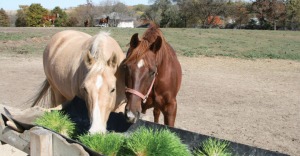Grass fodders are used as animal feed that can be cultivated in huge amounts within eight days from seed to grass for all livestock. There are various types of grass fodders one can avail, including oat grass, barley, rye grass, lucerne grass, etc. Growing grass fodder through hydroponic technology is now turning out to be popular in drought-prone regions.

Hydroponics has been there since Babylon days and is the skill of growing grass and plants without the involvement of soil. As far as hydroponic method is concerned it is very easier to feed the plants with the nutrients they require most. Given the appropriate conditions the plant makes uses of what they require for the best growth.
There's no soil, no soil pests' & concerns about Mother Nature devastating your plants. Also no worries when water dries out, acidic soils slaughtering your vegetations, bad water or bad weather infecting the plants. Water-loss is due, mostly to evaporation but because hydroponic is a closed method the plants have nutrients and water as they require.
With increasing global warming, water shortages, more land based disasters, ground water pollution from industries and agriculture, herbicides and pesticides on the increase – now hydroponically grown veggies for human use & grass fodder for animal feed are in demand, particularly in arid nations like the Middle East. No doubt hydroponic is the future of agriculture feed not only in the Middle East but also other regions of the globe where soil conditions are worse, water supplies are limited and temperatures are extreme.
For the home gardeners growing veggies and green fodder, hydroponic is an effective system to consider. There is a range of hydroponic methods' avail, with many saying they’ve the best formula. However, it is a matter of starting small to distinguish if you really like the idea, if it fits your needs, pocket and time.
